Impressive Work
Students from J. Bud Smith’s recent Penland wood workshop are feeling surprised and justifiably impressed with themselves, having accomplished what once seemed daunting. During the four-day workshop, students created beautiful wooden animal sculptures from buckeye, walnut, and butternut, using chisels and knives. Some worked from Bud’s designs and others executed original work with guidance from their instructor about what could be accomplished during the workshop. “This group was ambitious,” said Bud. With four days to learn the technique and complete a finished piece, students quickly abandoned the possibility of a test piece, with impressive results. “This finished work is pretty dang sick for no test piece,” remarked student Leslie Bartoebaugh. We agree!
“Egret in Walnut” by Rene Almon
Artist and Educator
J. Bud Smith is a seasoned artist and educator. A native of Cherokee, North Carolina and a member of the Eastern Band of Cherokee Indians, Bud first studied woodcarving at Cherokee High School under renowned artist Amanda Crowe and has been teaching makers of all ages since 1993. Bud’s native identity informs his work and teaching: the title of his Penland workshop was “Woodcarving: A Cherokee Perspective.”
As students began the workshop, they were both impressed and intimidated by the collection of finished work that their teacher brought with him. Beginning with blocks of wood, it was difficult to imagine that their finished work would look anything like Bud’s beautiful sculptures.
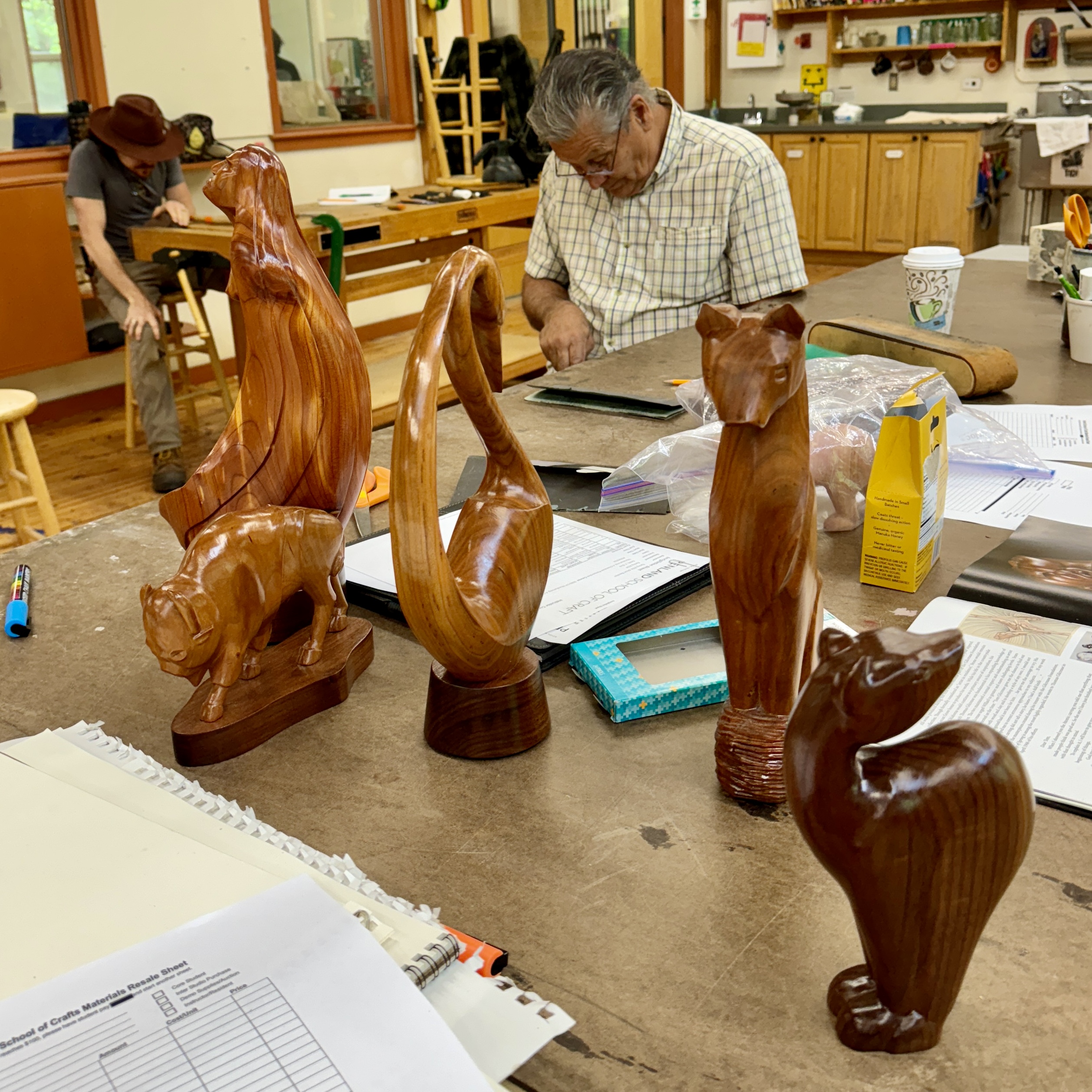
 A work in progress by instructor J. Bud Smith
A work in progress by instructor J. Bud Smith
Trusting the Process
Students found Bud’s teaching style to be laid back with a touch of humor. Calm and assured, he allowed students to make mistakes and joked with them as they faced down crucial moments in the process, helping them to loosen up. He gently let them know when they were going against the grain, and when asked if they were doing it “right,” he would answer, “Whose sculpture is this?”
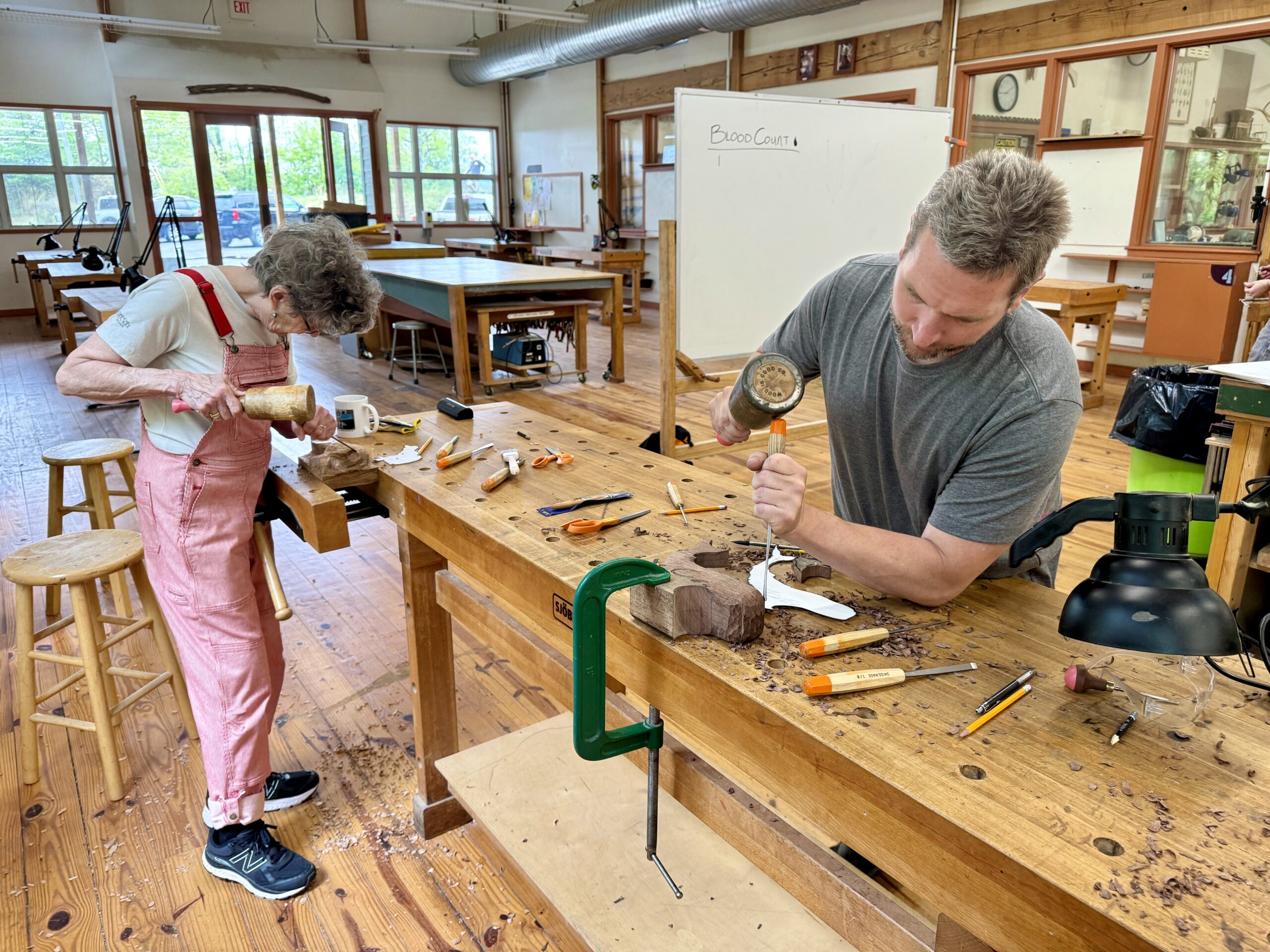

Student Leslie Bartoebaugh described her experience like this:
At first my piece was so blocky and it was hard to imagine that it would look anything remotely similar to his work. But I feel like we just had to keep trusting the process, release control, and keep going farther than we thought we were supposed to.
Once we started going far enough, there were these moments where it was like ‘Oh my God it’s actually rounding out. I can start to see it.’
There’s a lot of self trust. You’ve got to go ahead and chisel more off and tell yourself it’s going to be ok.
 “Whale in Walnut” by Kevin Mackoul
“Whale in Walnut” by Kevin Mackoul
“Art People Need Each Other”
On the final day of the workshop, students visited on the wood studio porch before show-and-tell. Their finished work sat in the studio, carefully prepared for the short walk to the Northlight building. Thinking over the arc of their experience, they remarked on the benefits of learning such a challenging and meditative process in the company of others engaged in the same. “Art people need each other,” said one student. “Everyone wants to be here and to learn,” said another.
For Rene Almon, the collective experience was best expressed by the music that the studio full of industrious and ambitious humans produced as they experienced the different stages of the creative process. First, everyone was working with a chisel. “It was really good with everyone tap tap tapping,” she said. “There was a rhythm to it.” As the week went on, students transitioned from chisel to knife as they focused on the details of their work. “Over time it just came down to the sound of the knife,” she said.
 “Anhinga in Walnut” by Leslie Bartlebaugh
“Anhinga in Walnut” by Leslie Bartlebaugh
 “Duck in Buckeye” bu Sophie Simmons
“Duck in Buckeye” bu Sophie Simmons
We are very impressed with J. Bud Smith’s skill as an educator and with the work created during this workshop. Congratulations to all on a job well done!
Interested in working with wood at Penland? Check out our upcoming workshops HERE.


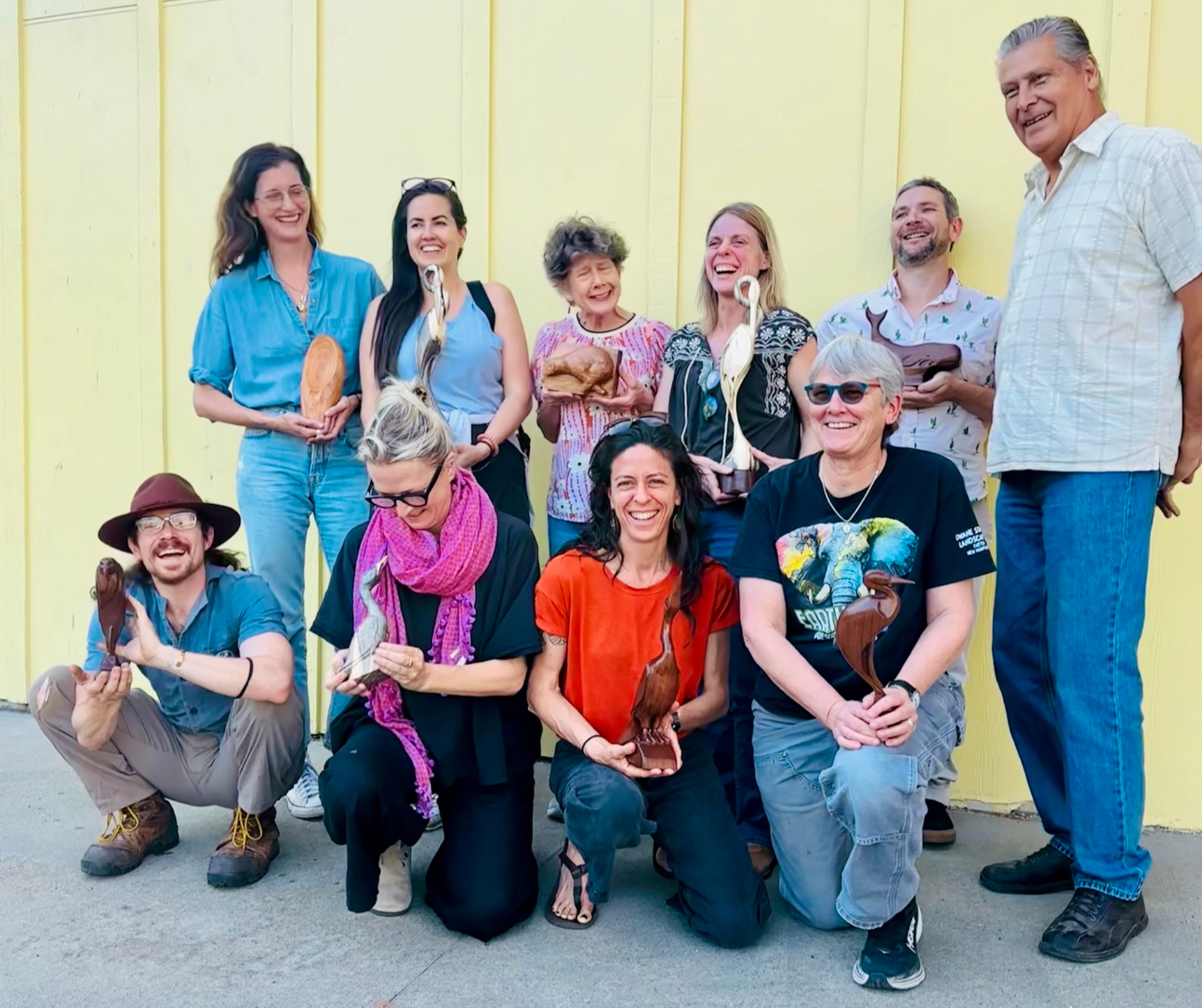






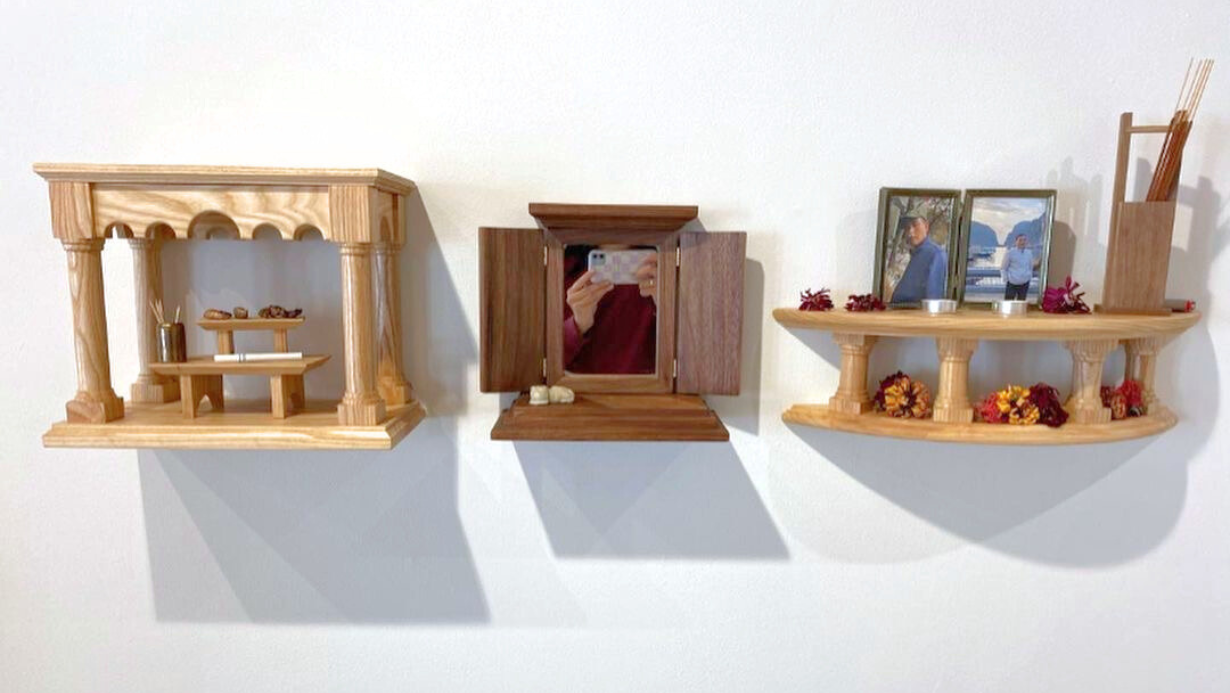
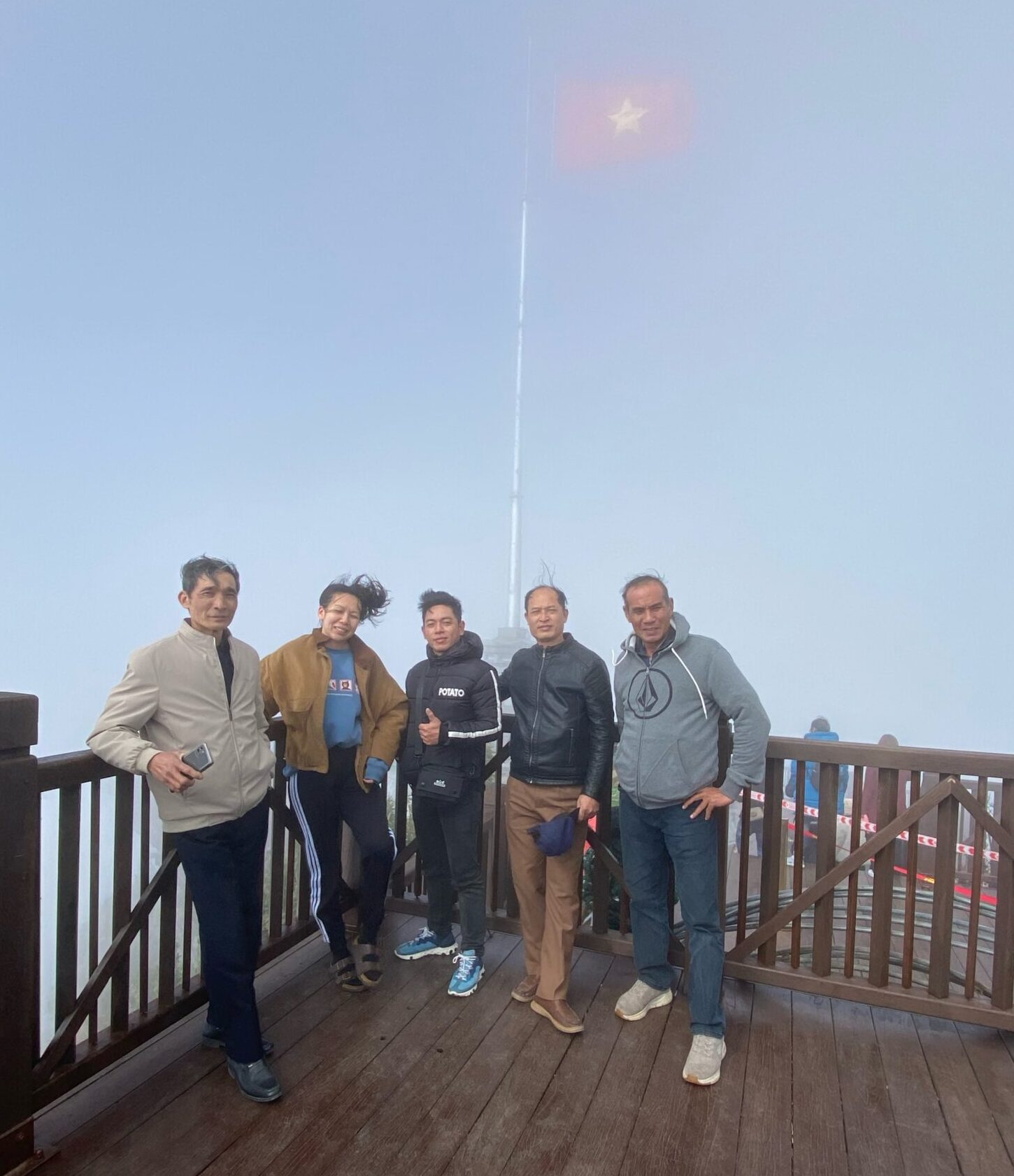 Lisa Nguyen and family members
Lisa Nguyen and family members 


 Lisa Nguyen, 2022-2023 Penland Core Fellow
Lisa Nguyen, 2022-2023 Penland Core Fellow